INTERVIEW: Amy Norquist of Greensulate Talks Green Roofs and Sustainable Design
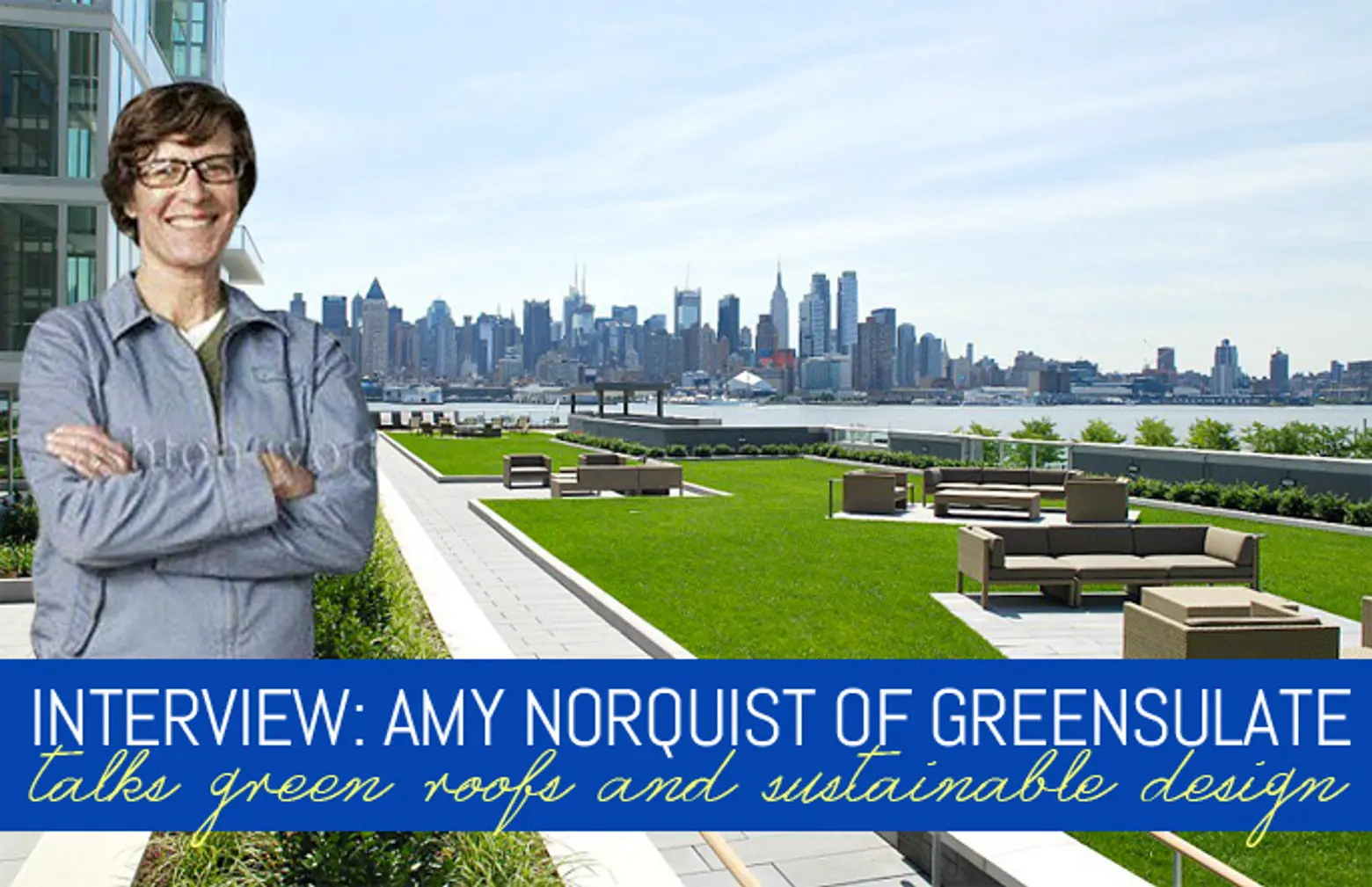
6sqft is no stranger to green design, and more and more buildings throughout New York City are implementing eco-friendly features, from providing electric car chargers to utilizing geothermal energy systems. A major component in sustainable development is the addition of green roofs. Whether they’re merely for environmental purposes, or if they provide a usable outdoor space, green roofs are the next big thing in green design. So, we decided to chat with Amy Norquist, CEO and founder of Greensulate, a leader in integrated design, engineering, installation and maintenance of green roof systems for the residential, commercial, and industrial markets.
For those of us who aren’t as familiar with green roofs, what are the basics?
Amy: Green roofing is a natural, supremely efficient, history-tested insulation method. Green roofs are essentially a living extension of the roof construction. Green roof systems are made up of layers designed to mimic the many vast benefits of nature while providing additional benefits to buildings’ envelopes.
The first layer consists of a protective membrane that goes directly on the pre-existing roof followed by a drainage element, a filter sheet, a level of substrate, and then a layer of vegetation. There are three main types of green roofs: extensive, intensive, and hybrid (a combination of the two). Each green roof system, depending on the type, is full of possibilities. At Greensulate we are not a product-based company, but rather we stay up to date with all of the most recent and innovative products offered in the industry.
How did you get into the business of green roofs?
Amy: When I moved to New York City from San Francisco (and before that Washington state), I experienced culture shock living on the tenth floor at 3rd Avenue and 14th Street. The view was uber urban and vastly different; I was looking down at a sea of tar roofs and concrete. As fate would have it, I learned about the concept of green roofs the same month I moved to Manhattan, and thought they were a magic idea. The seed was planted in a big way, and I immediately set out to learn as much as I could about green roofs with a goal of incorporating them into my private and professional life.
When I purchased my own house on Shelter Island, I added a green roof to help with summer cooling. It was through that process–and the nearly impossible DIY effort–that I figured out the need for a green roof company like Greensulate. I gave notice at my awesome job at the Beacon Institute and took the entrepreneurial plunge. Sheer determination, good timing, and a commitment to the mission of Greensulate led to the creation of a successful and market-leading green roof company. Today our company value is over $6 million dollars.
Does your past work at the Beacon Institute for Rivers and Estuaries inform your current practice?
Amy: Absolutely. I started working with environmental non-profits in 1988, and my last position at the Beacon Institute is the most closely aligned with Greensulate’s mission. Beacon studies rivers and estuaries with the Hudson River as its laboratory. Green roofs are as much about water as anything else and are aligned with Beacon’s mission benefitting human health, the ecosystem, economic development and improved quality of life. Absorbing, purifying and using water as effectively and naturally as possible is a core principle of green infrastructure.
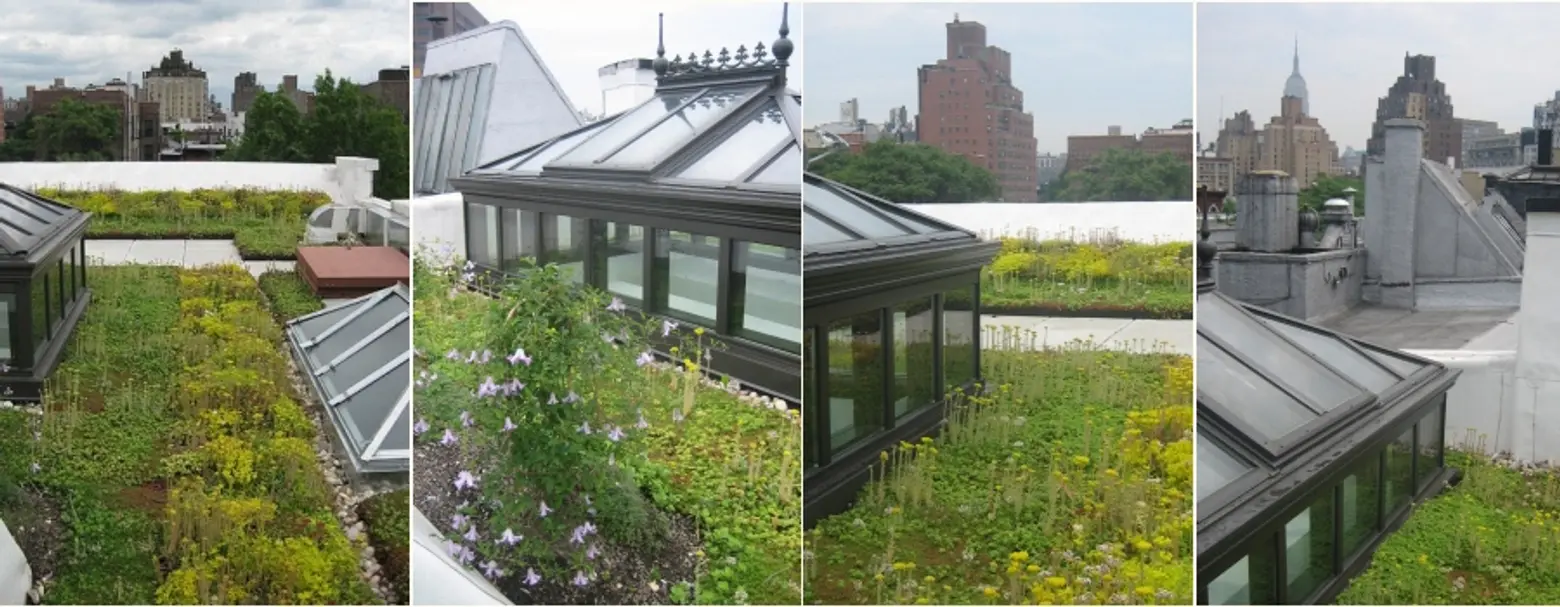 Greensulate-designed green roof on a West Village brownstone
Greensulate-designed green roof on a West Village brownstone
What are the advantages of installing a green roof?
Amy: Green roofs mitigate the negative consequences of highly urbanized environments. They absorb pollution, cool the air, absorb stormwater and act as a natural noise insulator. Furthermore, conventional roofs degrade over time due to membrane erosion from temperature fluctuations, UV radiation and damage from stormwater. Green roofs protect against all of this, extending a roof’s average life by approximately three to four times that of a traditional roof. They also provide thermal insulation, conserving significant amounts of energy usage. The benefits extend through a year’s cycle, as heat is retained naturally in the winter while also allowing a building to breathe and maintain a cooler environment in the summer.
There are many additional benefits; of particular importance is the reduction of carbon emissions. And by pairing a green roof with solar panels, the efficiency rate of the panels will increase as the green roof provides a cooling effect to the roof’s surface and will absorb pollutants in the air. Plants not only reduce toxins and improve air quality, but studies have shown that the presence of green spaces increases worker productivity and individual happiness and reduces stress. Many important players have stepped up to support the growth of this industry by providing incentives such as credits towards Leadership in Energy and Environmental Design (LEED) certification and tax abatements up to $5.23/square foot in New York City. In addition, the mere presence of green roofs or green walls can raise property values by up to 20%.
How has your business grown over the years as eco-friendly construction and design have become more mainstream?
Amy: Greensulate started up right before the financial recession, so it is difficult to match our growth to either the improving economy or increasing green construction. I will say that “green infrastructure” as a green building technology (this includes green roofs, green walls, and street level green strategies such as street trees and bioswales) is taking off more than any other eco-friendly building technology, and Greensulate as a company is benefiting from that growth.
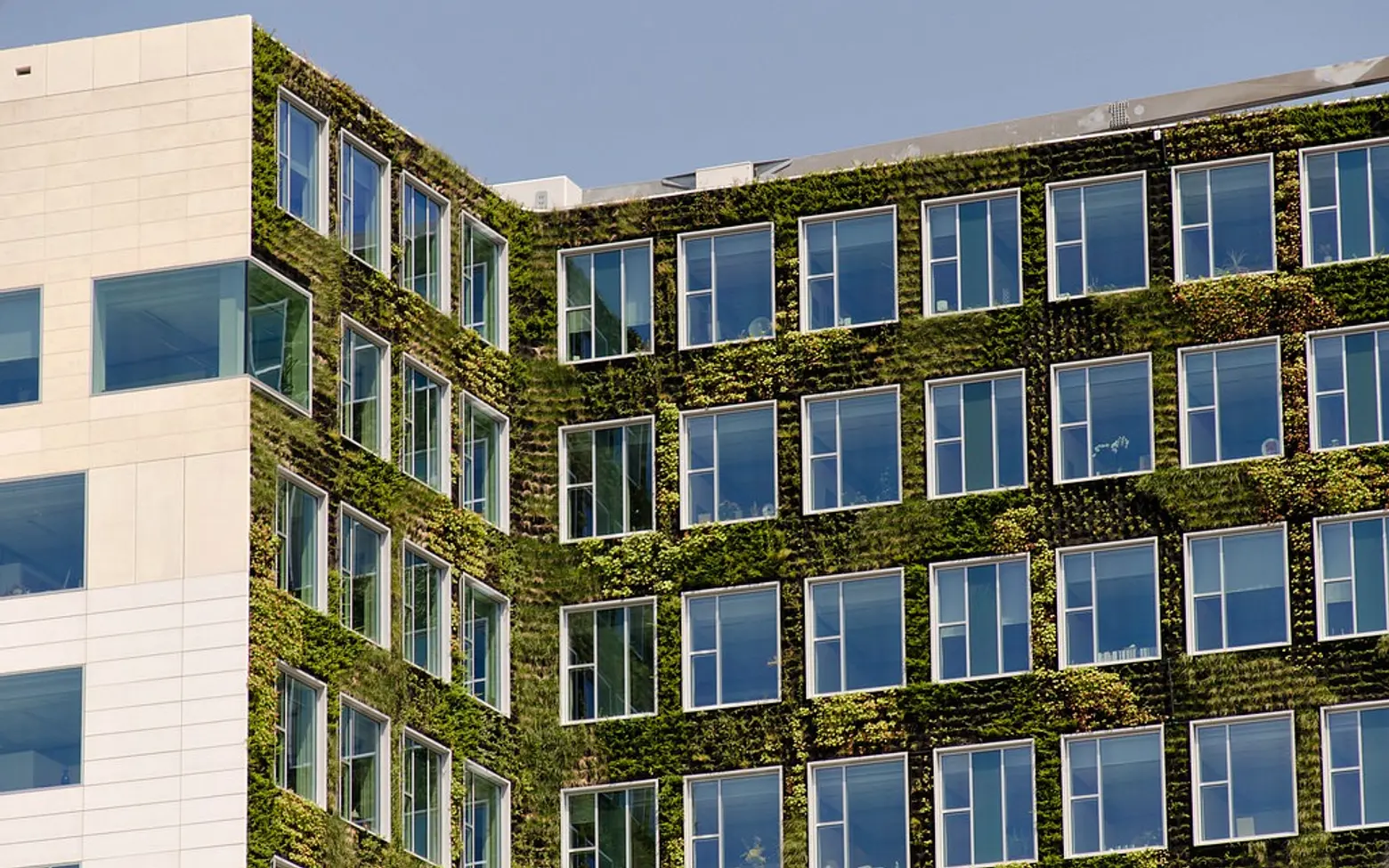 Example of a green wall, via reidab via photopin
Example of a green wall, via reidab via photopin
Greensulate also installs green walls. Can you tell us a little about those and how they fit with the roofs?
Amy: Green walls tend to be driven more by aesthetics since they are more visible at the street level. They offer some of the same benefits as green roofs since they insulate the building, absorb pollution, absorb or filter rainwater, and serve as a natural noise insulation.
You operate in New York City, San Francisco, and Los Angeles. How do the projects differ in each city?
Amy: In New York and San Francisco, green roof adoption is often driven by stormwater management benefits. Both cities operate with combined sewer systems, which unfortunately produce raw sewage overflows during moderate to heavy rain events. Green roofs absorb and slow down rain into the sewer systems, which prevents such overflows. In Los Angeles there is more focus on conserving water to employ water-saving and re-use technology, and it’s more closely matched to the air quality and energy-saving benefits.
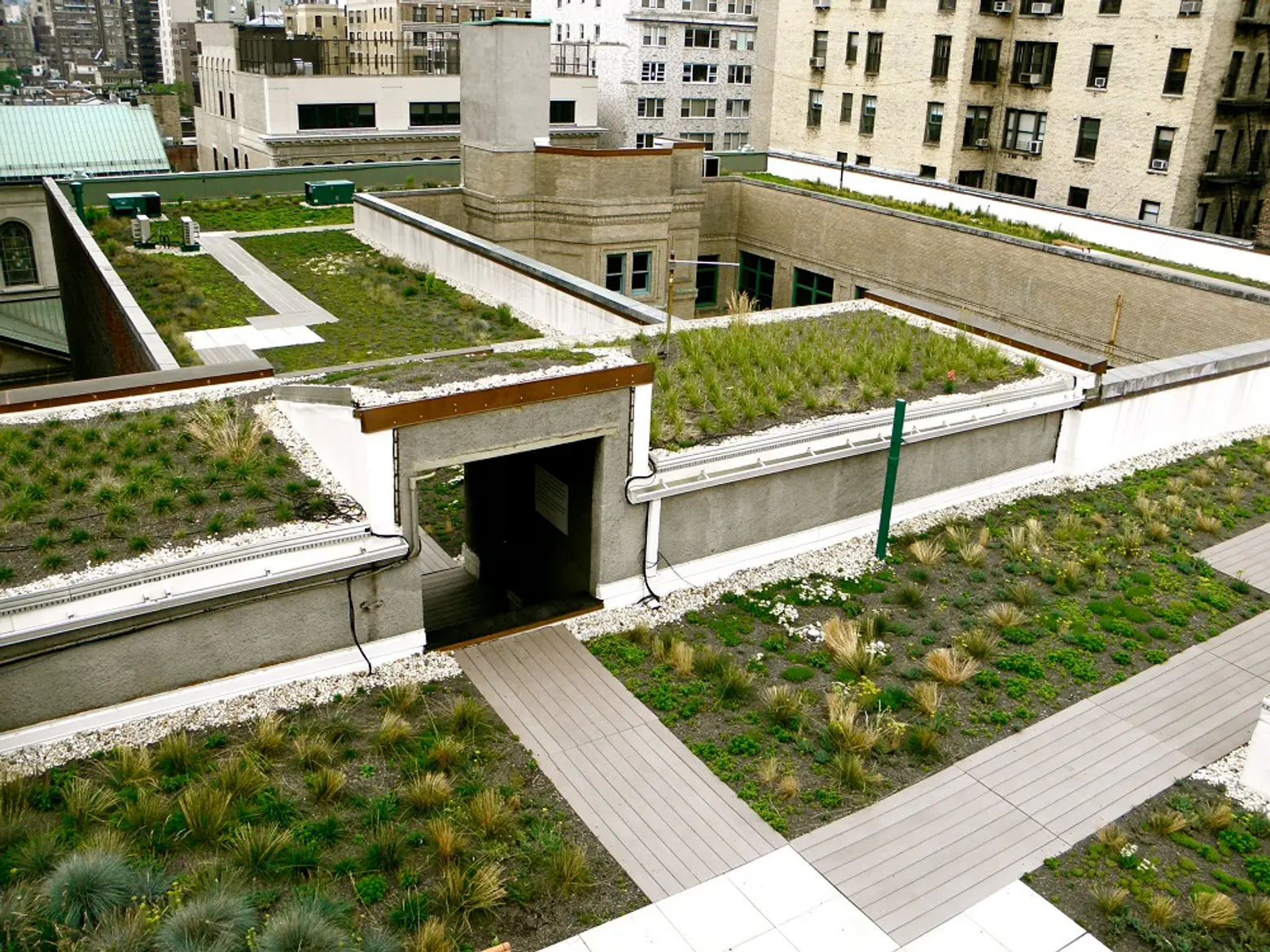 Regis High School’s green roof
Regis High School’s green roof
Do you have a favorite project?
Amy: My favorite project is a tie between the Fashion Institute of Technology and Regis High School, but for different reasons. I like FIT because of the sheer size and impact of the roof. We’ve installed over 30,000 square feet there, which means the roof absorbs the pollution of hundreds of automobiles each year. I’ve been at meetings in that general area of the city, and it’s great to see the roof from so many angles; it’s a good ambassador. Regis I love since it was a very early roof for us, and it is a beautiful design, reflecting a natural estuary from above. It utilizes complimentary elements such as bee hives and solar power. Regis also included an ongoing study with Columbia University on their roof, which measures temperature and the water purifying properties of the green roof.
You’ve had some pretty high-profile commissions, including FIT and the Bowery Mission. Is it more challenging to work on these larger projects than those for private residences?
Amy: The biggest challenge with higher profile projects has to do with the length of the construction window. There tend to be more moving pieces to the projects and a longer sign-off process. That being said, we are often able to have a bigger impact with these projects since they tend to be larger scale and larger green roofs.
Do you have a specific design philosophy when it comes to green roofs?
Amy: We value performance and longevity at Greensulate, but we don’t have to sacrifice design aesthetic to follow our philosophy. Greensulate is “system agnostic,” so we employ a design process that chooses the absolute best and most cost-effective green roof design for each project. We strive to give our clients a short return-on-investment window, making it both economically and environmentally positive.
We love that you’re part of 1% for the Planet, where you donate 1% of your annual revenue to environmental conservation. What organizations have you supported in the past and who will you be donating to this year?
Amy: In the past we have supported the New York Restoration Project, and this year I’m going to look at supporting a West Coast organization that works in clean water policy.
What’s the best part of running Greensulate?
Amy: Knowing that every day we are planning to add green space to urban areas. Since green infrastructure is a relatively new field we get to create our own market. I love what we do and I love the people I work with. It’s really the first job I’ve had where I don’t even think to call in sick, even if I’m feeling a little under the weather.
Greensulate
1-800-613-3180
[email protected]
All images courtesy of Greensulate unless otherwise noted
Get Insider Updates with Our Newsletter!
Leave a reply
Your email address will not be published.
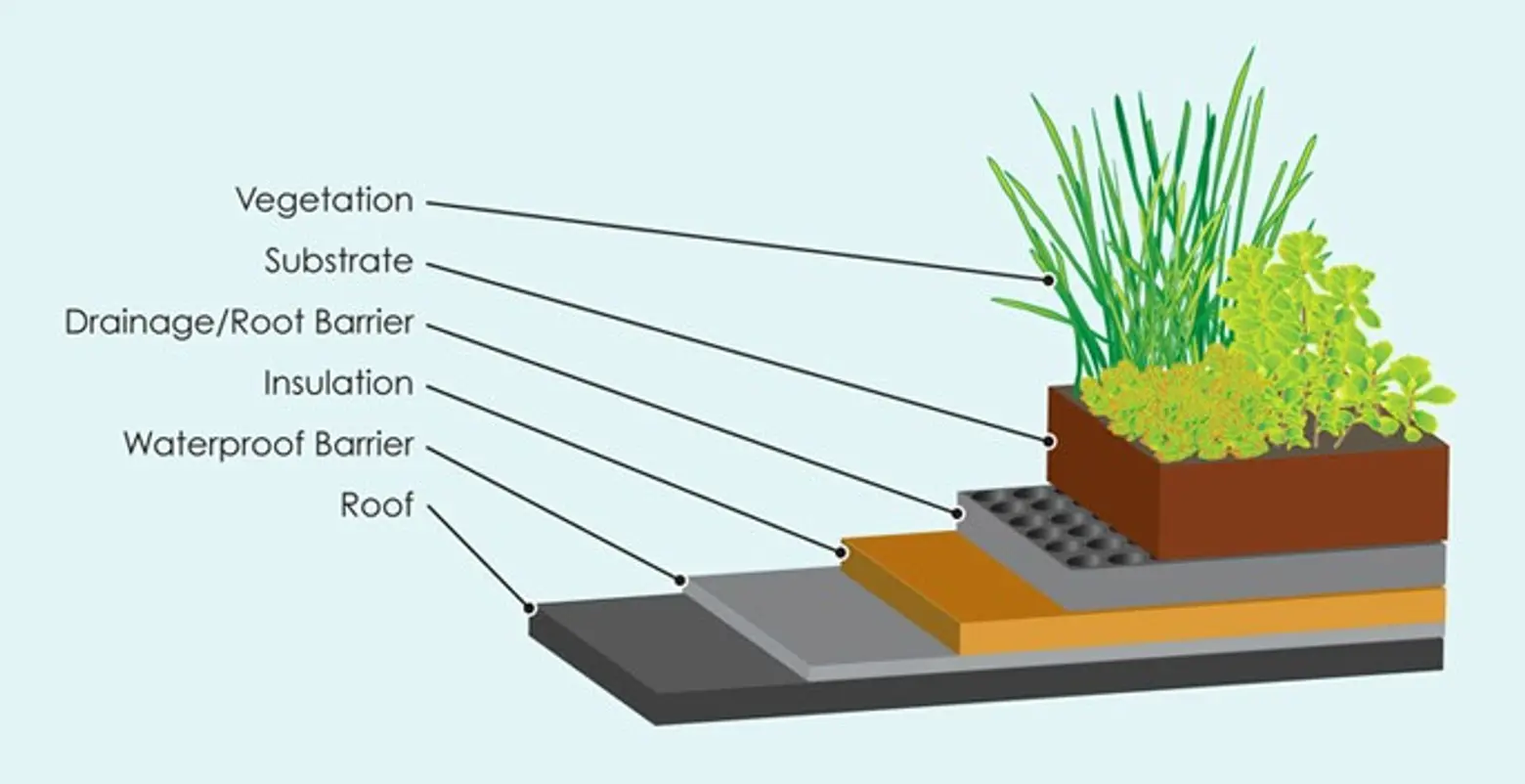
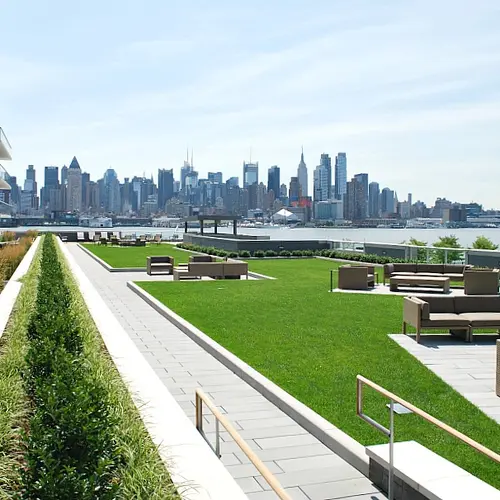
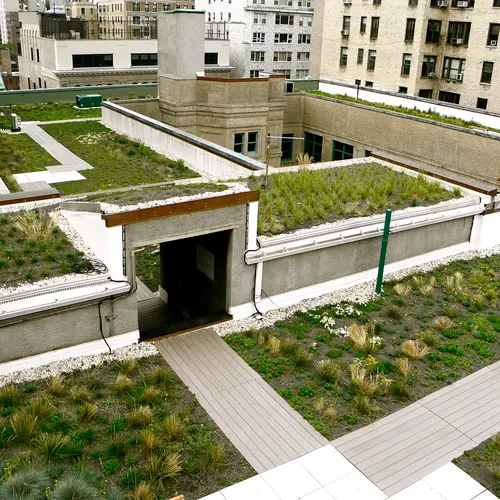
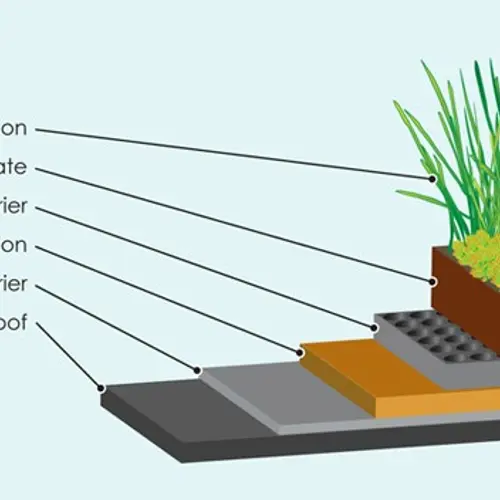
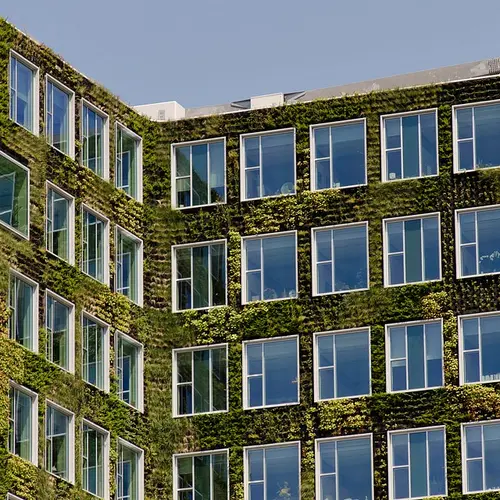
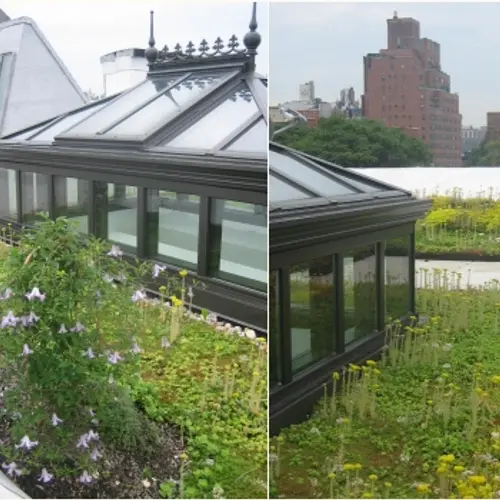
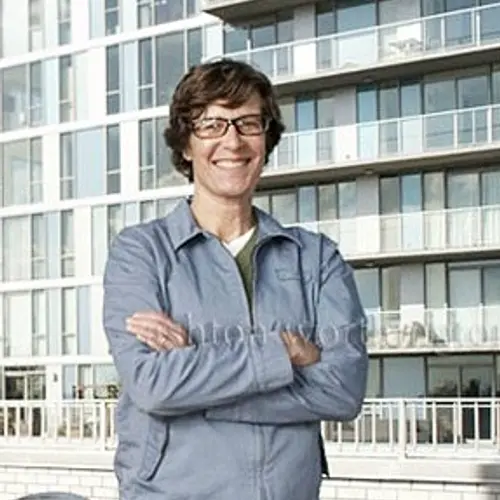
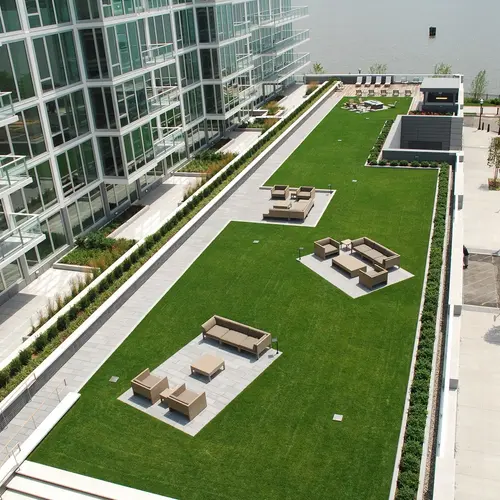
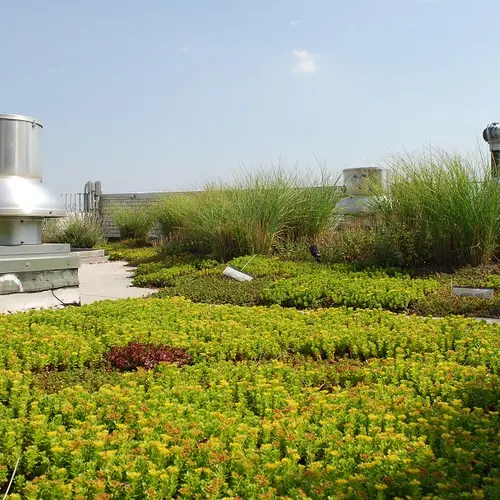
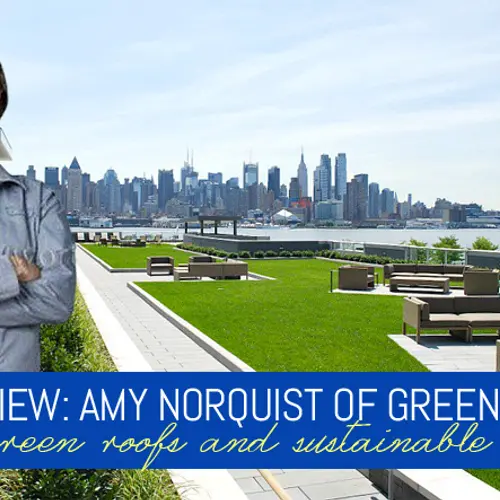





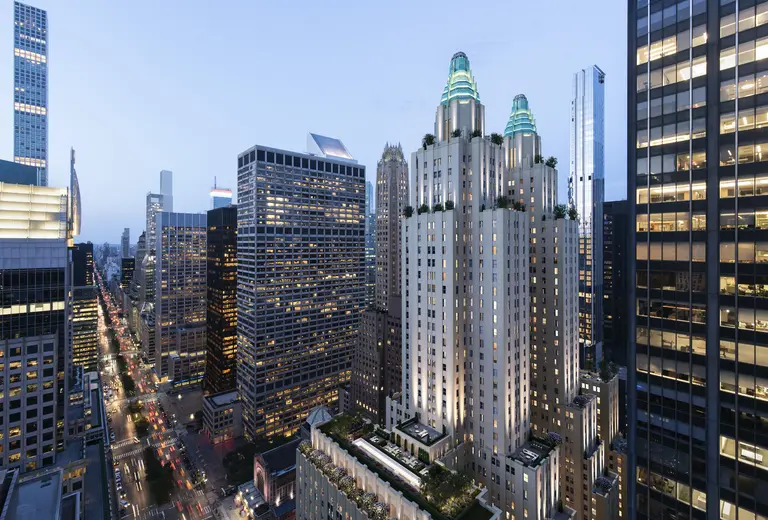









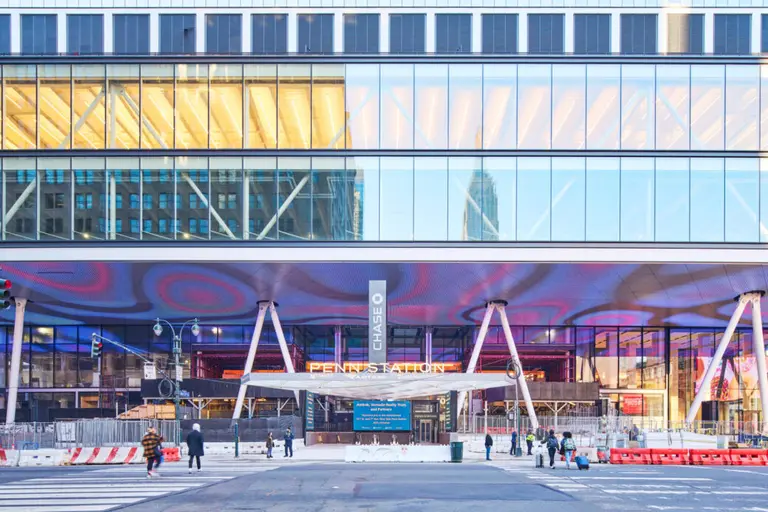











Nice article! Now I’m thinking about how I can implement this green idea to my roof. I got this kind of roof
smileroofing.com/fl/jacksonville/
What can you recommend me this deal? I want to know properly how I can improve my roof. Please email me at
[email protected]